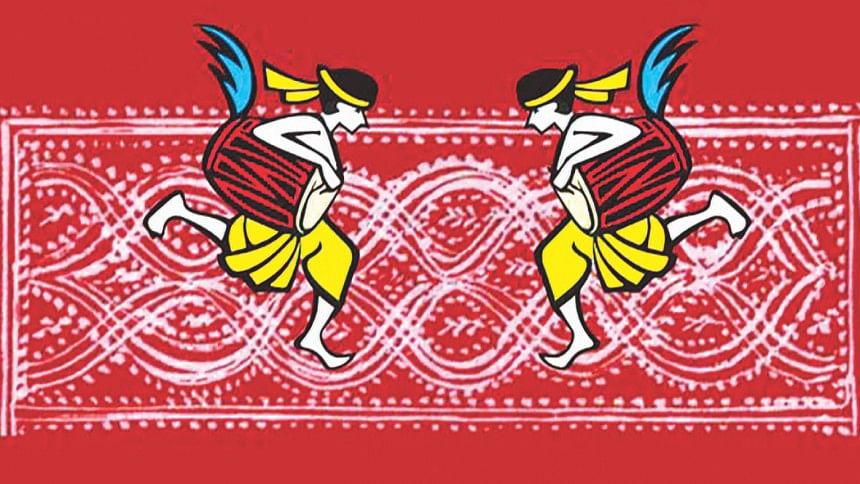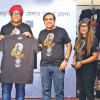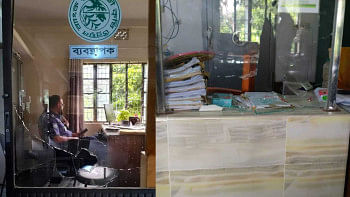Pohela Baishakh My Bengali New Year Musings

I
Once upon a time, a very long time ago, King Shashanka of Gaur (Gauda) introduced a solar calendar that marked the advent of the Bengali New Year as the first day of the wintry month of Agrahayan. The idea apparently was to celebrate the Aman harvest annually. In the early Mughal era, though, the solar calendar was replaced by a lunar one. Later in this era, Akbar, the greatest of all the Mughals, initiated a reform in the calendar for more efficient tax collection. What he did was reconcile the lunar and solar calendars, making spring-ending Baishakh replace Agrahayan as the first month of the year. Thus was Pohela Baishakh, or the first day of the Bengali New Year, born. But when the British first connived to get rid of the last Mughal, and then established an absolutist control over India, they saw to it that the Gregorian calendar held sway over all other calendars—at least in official events (according to this calendar, Pohela Baishakh will always be on 14 April!).
Nevertheless, native businessmen during the Raj continued the tradition introduced in Akbar's era of welcoming the Bengali New Year or Nobo Borsho auspiciously with a clean slate, at least as far as their accounts were concerned. In villages all over Bengal, the tradition of heralding the New Year with fairs where crafts people could sell their wares, and ordinary people of all classes and religion could enjoy a festive atmosphere through jatra performances, song and dance routines, kite flying, boat races, and even wrestling, not to mention feasting, was established at this time as well.
The uninterrupted celebrations of Pohela Baishakh festivities thus testify to an extended period of communal harmony in rural Bengal. The brutal incidents hastening partition, inevitably, for some time made such festivities suspect in the eyes of religious zealots. One thinks of Jibanananda Das's lament at the end of innocence in pre-partition Bengal in his great and longish work, "1946-47." The hemorrhaging induced by factional politics in the pre-partition years, he laments in this anguish-filled poem, meant the end of festivals in which all village people could participate spontaneously and gleefully.
There were thus two ways in which Pohela Baishakh was celebrated in bygone eras. One was political/commercial, for it was seen from such a perspective as a day initiated by kings and emperors for administrative reasons, and by businessmen to facilitate account keeping. The other perspective was communal, for the festivities involved events that invited wholehearted participation by everyone. The core idea here was to begin a whole new cycle of life in a joyously communal frame of mind.
II
When I think of my childhood though, I can't remember Pohela Baishakh being celebrated publically in Dhaka till the mid-60s. When Pohela Baishakh became a presence in our lives, its celebrations were induced not in response to a centralizing power's diktat, but as a reaction against its policies. Pohela Baishakh, in other words, got momentum as a kind of counter-discourse—a vibrant collective and spontaneous response to the damming of the Bengali nationalist consciousness by successive Pakistani military governments working in cahoots with Muslim League politicians.
The Pakistani rulers were bent on implementing repressively homogenizing policies, adopted it would have perversely liked all its citizens to believe, to cement national unity. To them and their lackeys, anything smacking of Rabindranath Tagore was suspect, as was the increasingly overt display of sentiments associated with Ekushey February. To Bengalis, however, the language martyrs of the 21st of February, 1952 had by then already assumed mythic proportions. Rabindra Sangeet and all things Bengali, too, now had for the people of the east of the country the kind of elemental attraction that Pakistani government officials and their lackeys in East Pakistan were finding quite insidious.
Pohela Baishakh, therefore involved a reclaiming of the past for Bangladeshis who wanted to have none of Pakistani machinations designed to consign Bengali cultural markers out of sight forever. Consciously or unconsciously, the Pohela Baishakh events, revived in Bangladesh from the mid 1960s, were designed to assert Bangliana—Bengali identity—and were meant to assert our rootedness in our part of the world.
III
Still in my early teens in the mid-1960s, I knew little or nothing about the political connotations of the Pohela Baishakh celebrations gaining momentum by the year in Dhaka—in tandem with the movement that would lead to our liberation, I should add. Suddenly, a "must-go" event was added to the list of events that my friends and I had to attend throughout the year in 1967 when Chayanot organized its first Pohela Baishakh musical event inside Ramna Park. The opening Tagore number, "Esho, esho hey Boisakh" set the stage splendidly: "Come, come O month of Baishakh/With your hot breath blow away the dying/Let the debris of the whole year be driven away" (my translation).
As if in sync with the liberation movement accelerating at Bangabandhu's call during the "Six Point Movement," Bangladeshis dedicated themselves to overthrowing the debris of the old political dispensation. Clearly, they were now bent on moving culturally as well as politically towards a new world. It was heady to hear other Rabindranath songs that were so apropos to our nation-forging moods on Pohela Baishakh mornings: "Arise this day in happiness fresh and new/Soak in the light of the newly risen sun" ("Nobo Anande Jago").
The brutality of the Pakistanis in 1971 meant that there would be no Pohela Baishakh celebrations that year. But after liberation, the Chhayanaut function restarted with redoubled vigor. It now began to draw even more people. Soon, the event was surrounded by other events. It was now supplemented by seemingly endlessly proliferating happenings in and around Ramna Park and the university area. Rapidly the celebrations spread to neighborhoods everywhere, to mofussil towns and to all major urban centers of Bangladesh.
Come dawn, apparently everyone in Bangladesh (but in truth, only the young in heart!) set out for the Pohela Boisakh event they had set their eyes on, clad in "traditional" clothes. Pantha Bhat (water-soaked rice) parties became the norm, and the talk was of the number of bhortas (the quintessential Bengali cuisine, comprising of smashed vegetables or even squashed boiled or dried fish) served at lunch or dinner. A few streets of Dhaka, at least, became for a change emptied of their usual irritating, polluting vehicles and sites for beautiful feasts for the eyes afforded by vibrant young ones dressed up delightfully for the occasion. Romance, almost palpably, was in the air! Soon, the festivities and romancing began to stretch beyond the morning hours as hawkers, shop-keepers and stores got into the act. The cultural events, in fact, soon stretched into the evening.
In 1989, the Pohela Baishakh events were enriched by the ultimate spectacular sight—the Mongol Shobhajatra or procession. It was designed to signify the auspiciousness of the day through vivid colors painted by students of the Institute of Fine Arts of the University of Dhaka. The procession was highlighted through totemic creatures meant to symbolize the propitious nature of the day. Truly, Dhaka now had its own carnival, not comparable to the ones in Rio or New Orleans perhaps, but unforgettable in its own way.
Lately, and in our age of conspicuous consumption, fashion houses and designers have been doing their best to maximize their profit out of the day. Now we get early signals from them through the old and new media of the coming of the day when they display their wares one way or the other before Pohela Boisakh. There is no escaping them in the media and on the day itself, no matter where you are in Bangladesh. Even in Bangladeshi communities abroad, one knows that one can expect visual, auditory and olfactory treats on this very special day.
IV
Nothing, seemingly, can dent the Pohela Baishakh mood of joyousness anymore. A few fundamentalists have tried to mar the festivities with murderous intent and some zealots still attempt to damn it as a pagan festival. Bombs exploded in the Chayanot festival on April 14, 2001, for instance, left ten people dead. That morning, as in all Pohela Boisakh days, the event was being broadcast live on television. The idea of the group responsible for the explosion clearly was to warn everyone watching to stop holding such a function. But though many of the events on that day were cancelled, the next year saw the event being held everywhere in the country with no less enthusiasm than before.
Clearly, Pohela Baishakh has stirred in us archetypal feelings and memories. It is a day that marks us as Bengalis. True, the English New Year claim our attention as well, and all of us may often not remember at the beginning of a particular year what new Bengali one we are stepping into on that day, but the celebrations strike chords that resonate in us strongly then and afterwards. Pohela Baishakh is a day to look forward to, year after year and I await it eagerly this year as well. Shuvo Noboborsho!
Fakrul Alam is a Bangladeshi academic, writer and translator.

 For all latest news, follow The Daily Star's Google News channel.
For all latest news, follow The Daily Star's Google News channel. 








Comments